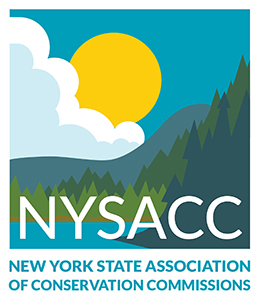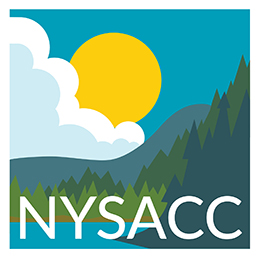Ask NYSACC
Ask NYSACC is a new feature in which NYSACC fields reader questions on a variety of topics. We seek expert responses to your questions from environmental professionals. If you have a question, please email NYSACC’ President at SimonSkolnik@gmail.com.
Question #1

I have observed fire trucks filling up at dry standpipes at various lakes and other water sources around my town and then discharging that water elsewhere, either at a scene or in training. Usually at a scene this is less of an issue if the water is being discharged to a structure or field, but that can still get to a nearby waterway. For training they usually just discharge right back into the lake they are standing at. Sometimes that discharge flows directly into another lake. We have begun to see invasive plant species (e.g., water chestnut) and possibly animal species (e.g., zebra mussels) showing up in lakes which are disconnected from other contamination sources and the only consistent, potential source we can identify is fire trucks emptying their water trucks.
For example, at a local park, the lake there is invested with water chestnut. This was brought to the attention of our local PRISM in 2018. The PRISM investigated and initiated a weed pulling work program in June of 2019, pulling over 20,000 plants. However, the PRISM has told us that the lake is so invested at this point that they expect this to be a long-term, if not a permanent issue. They came back in August 2019 and pulled more water chestnut plants and plan to come back next year, around June when the water chestnut is starting to show. Right next door on county property we also have our local county fire training facility. The park manager sees fire trucks discharging and refilling often during training and the water discharged flows directly into the lake. We have put some thought process into this and figure some truck must have arrived full (the water trucks are always full as part of emergency preparedness. The water trucks would only be driving empty if they were on their way to go fill up at a standpipe) and brought the invasive plants in at one point and discharged before proceeding with training (fill up, empty, repeat). Furthering this, though, if each municipality’s trucks refill from the standpipe at that lake at the end of the training session and go home, then discharge later at a scene or another training session and that water enters some other water body this can spread the invasives.
Has the NYSACC or any CAC addressed or talked about this? Have you ever heard of NYC DEP or NYS DEC discussing or addressing this? If so, what resources can you all share with me to look into this further? This might even become a topic for the next NYS Conference on the Environment if it has not been already.
Response:
The response to this question was provided by Justin A. Perry, CF, Chief, Bureau of Invasive Species and Ecosystem Health, Division of Lands and Forests, New York State Department of Environmental Conservation.
Yes, we’ve dealt with this before. In particular, the use of dry hydrants. New York does not have any rules or regulations concerning the use of dry hydrants and the spread of invasive species. Honestly, I don’t think firetrucks are a major vector for the spread of invasive species here in New York. It seems to be a major consideration for wild fire fighting (think: remote locations and large aerial dumps). Unfortunately, New York does not have any guidance. Wisconsin might have some suggested guidance (see below).
Dry Hydrant Maintenance
Aquatic Invasive Species (AIS) Considerations (NOTE: Active Fire Operations are EXEMPT from the decontamination AIS Guidelines!)
When using municipal or well water in truck tank:
-
Back flush dry hydrant as per the FD procedures
-
Draft natural water to test functionality of the dry hydrant
-
Cycle natural water through pump and to discharge back into water source, do not refill tank
-
When test is complete, drain water from suction hose, pump, discharge hose and nozzle (NR 329.04 (5a))
-
Remove all plant and animal materials from suction hose, pump screen, discharge hose and nozzle (NR 329.04 (5b))
-
Dispose of plant and animal materials in trash (NR329.04 (5c))
-
The tank water does NOT need to be drained if the water is discharged in upland areas through suppression or dumping (NR329.04 (5b note)
-
Refill truck tank with municipal or well water
-
Allow all equipment and pump to dry for 5 days OR steam clean all equipment OR wash equipment with soap and water and rinse with power washer OR disinfect all equipment with 200 ppm chlorine bleach water (NR329.04 5d,e,f,g) Only ONE of the above measures is needed.
-
Must allow the disinfecting by one of the above methods BEFORE testing another dry hydrant on a different natural water body. Testing dry hydrants on the same natural water body is allowed without any disinfecting.
When using natural water in truck tank:
-
Drain all water from truck tank and equipment on upland area.
-
Utilize a portable pump and refill tank from natural water body containing the dry hydrant to be maintained.
-
Back flush dry hydrant as per the FD procedures
-
Draft natural water to test functionality of the dry hydrant
-
Refill truck tank
-
When test is complete, drain water from suction hose, pump, discharge hose and nozzle from both the portable pump system and the truck pump system (NR 329.04 (5a))
-
Remove all plant and animal materials from suction hose, pump screen, discharge hose and nozzle from both the portable pump system and the truck pump system (NR 329.04 (5b))
-
Dispose of plant and animal materials in trash (NR329.04 (5c))
-
The tank water does NOT need to be drained if the water is discharged in upland areas through suppression or dumping (NR329.04 (5b note)
-
Allow all equipment and pump to dry for 5 days OR steam clean all equipment OR wash equipment with soap and water and rinse with power washer OR disinfect all equipment with 200 ppm chlorine bleach water (NR329.04 5d,e,f,g) Only ONE of the above measures is needed.
-
Must allow the disinfecting by one of the above methods BEFORE testing another dry hydrant on a different natural water body. Testing dry hydrants on the same natural water body is allowed without any disinfecting.
Question #2:
What have other towns set up for mining ordinances in New York State (NYS)? We have a need for mining controls and management and I’m looking for input. NYS DEC regulates all mining in NYS. But this is interesting that local mining ordinances to manage some of the unregulated parts of mining do not appear to be very common in NYS. We found one municipality in Columbia County (Town of Chatham) that has both mining and ridge line protection integrated into their town code. I want to advise our town board, as both are mentioned in our town comprehensive plan to work with to help protect our town’s rural character.
Response:
The response to this question was fielded by NYSACC’s President, Simon Skolnik.
Here’s what we gleaned from the NYS DEC website:
- NYSDEC, Division of Mineral Resources, 625 Broadway, 3rd Floor, Albany NY 12233-6500,518-402-8072
- Here are links on their website for further information: http://www.dec.ny.gov/lands/5030.html and http://www.dec.ny.gov/docs/materials_minerals_pdf/mlperm.pdf.
You can start by contacting the DEC, and we’ll get back to you as soon as I hear anything else. Separately, Nadya Hall from Teatown’s ELLA provided a few documents that may be of use:






